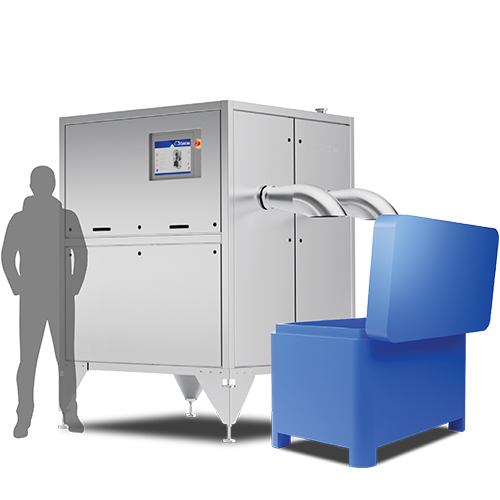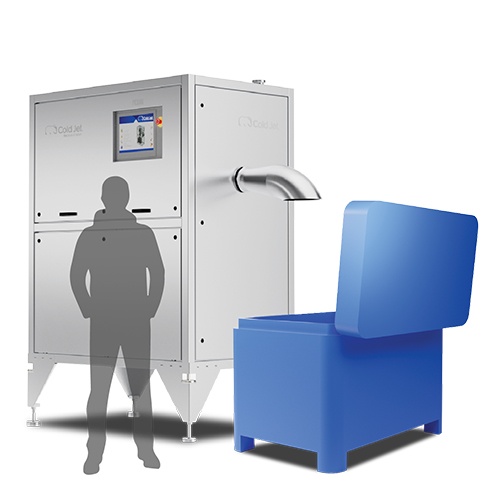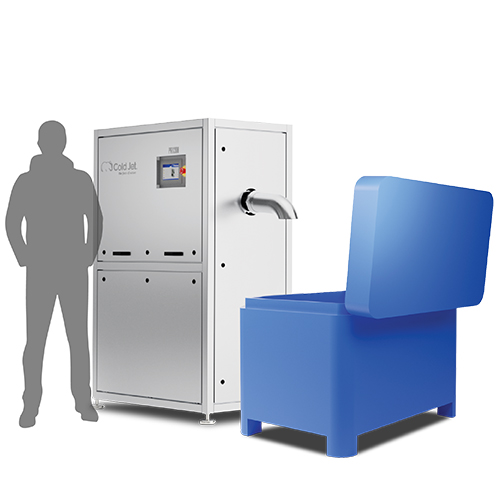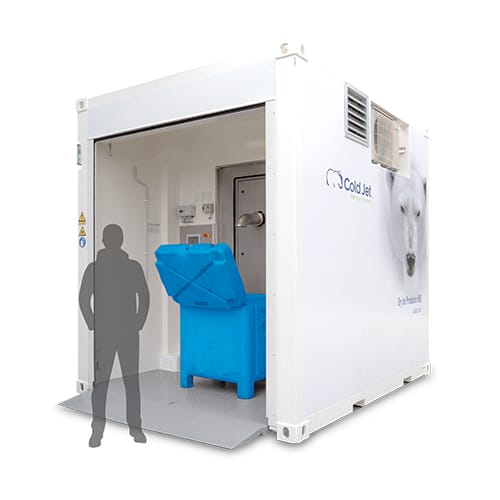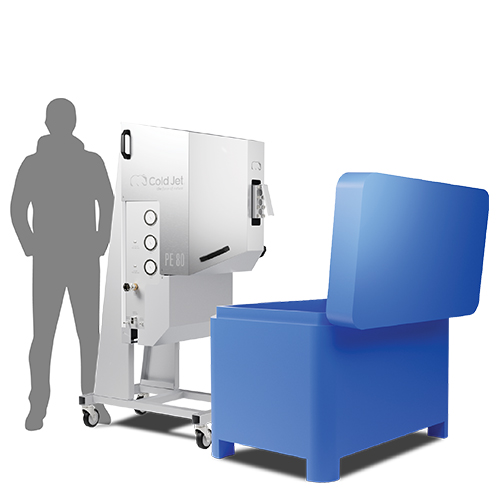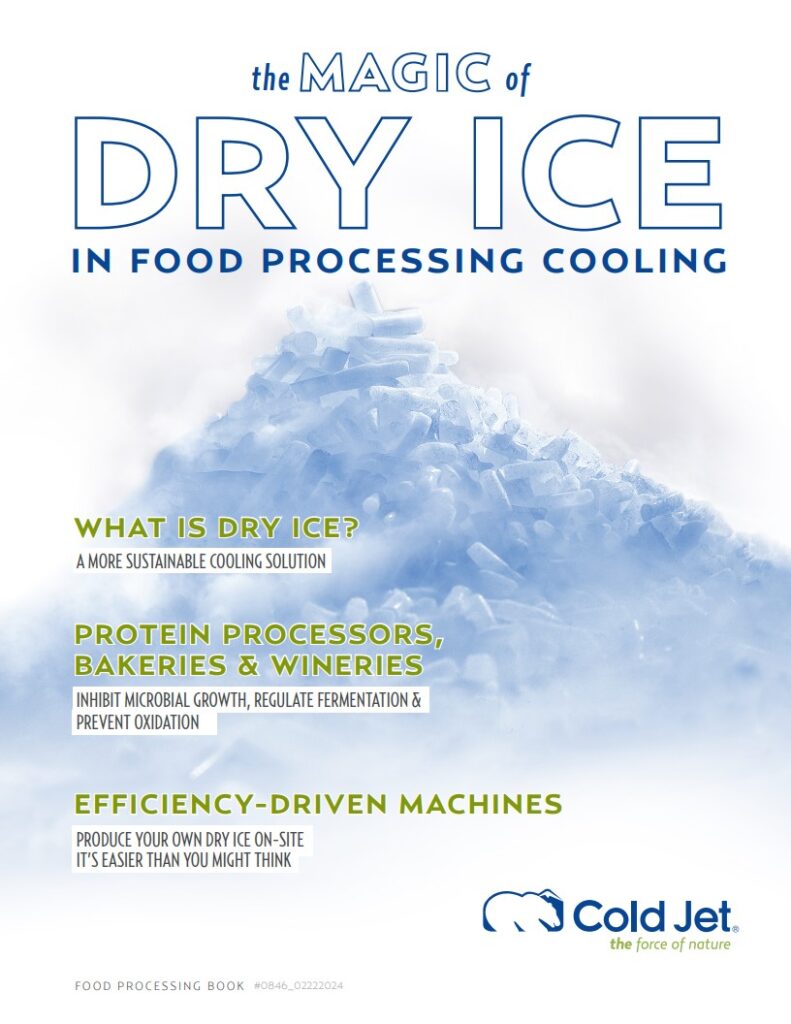The temperature of dry ice measures (-109 °F / -78.5 °C) and its cooling power is thrice that of water-formed ice. Microbial activity is inhibited below 40 °F (4 °C).
Dry Ice is a food approved cooling medium that ensures critical control points (CCPs) are met, during the production, storage and transportation of chilled and frozen products.
Cold Jet provides the ideal solution for food processors: our top-of-the-line dry ice production machines. This technology enables rapid and efficient just-in-time, in-house dry ice generation, empowering food processing facilities to manage their own supply and eliminate waste from sublimated pre-ordered dry ice. Consequently, you can lower costs, produce dry ice on demand, and free up valuable facility space by removing the need for numerous dry ice containers.
Contact us today to learn more about how on-site dry ice production machines can transform your business.
Dry Ice Cooling for Protein Processing
Dry Ice has a primary function of transferring cold energy into your product.
Dry ice aids in maintaining critical temperatures, preventing hot spots and therefore curbing microbial growth without adding water to the process. It also enhances meat product quality, safety, and production efficiency, reducing the risk of contamination and lowering production costs in the process.

-
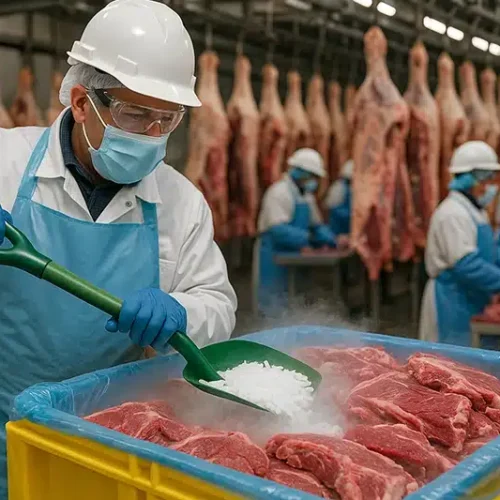
Beef, Poultry and Pork Dry Ice Chilling
-

Dry Ice Hot Spot Prevention During Protein Blending
-
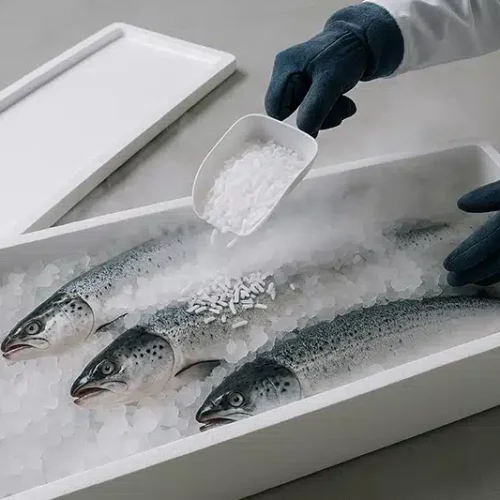
Low Weight Shipping of Fresh Fish by Using Dry Ice
Benefits for Protein Processing
- Eliminate hot spots
- CAPEX PREVENTION No need to invest in additional chiller cooling capacity infrastructure
- Reduced weight Dry ice pellets are much lighter than water
- Reduce product rejects
- Rapid chilling & freezing
- Reduce drip loss
- Inhibit microbial growth
- Environmentally sustainable
Use Cases for Protein Processing
- Offal Lines
- Trim Lines
- Mixers & Blenders
- Added Value Shipping
- Intermodal Transportation Cooling
- Dry Ice Blasting on Food Equipment
- +More
Best dry ice production equipment for meat processing facilities:
-
The PR750H Dry Ice Pelletizer
Produce up to 1,653 lbs (750 kg) per hour with this high-capacity dry ice pelletizer
PR750H -
The PR350H Dry Ice Pelletizer
Produce up to 772 lbs (350kg) per hour with this high capacity dry ice machine
PR350H -
Automated Dry Ice Production & Dosing
Custom-engineered for intermodal food transportation and meat chilling. These machines create precise dry ice slices and pellets and accurately drops them directly into a conveyor of boxes. The perfect addition to your fully automated food processing system.
DS1000E
Dry Ice Cooling for Industrial Baking
Similarly, within the industrial bakery sector, it plays a crucial role in temperature and fermentation control leading to batch consistency.
Dry ice pellets are the perfect solution for chilling dough in bakery plants. By keeping yeast cool in mixers and blenders, you can control fermentation, even during hot weather. This makes dry ice a valuable tool for bakery managers, operations directors, and food safety and quality professionals.

-
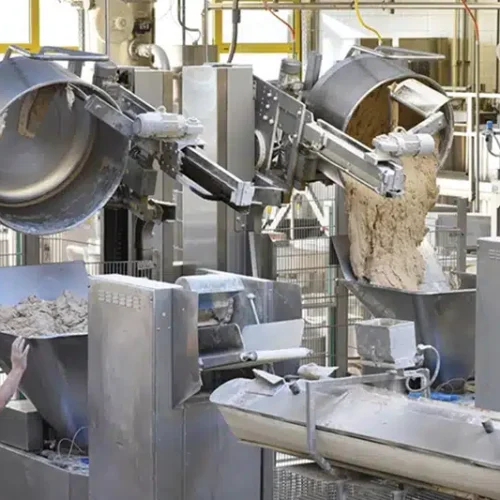
Dry Ice Pellets Safely and Effectively Regulate Fermentation
-
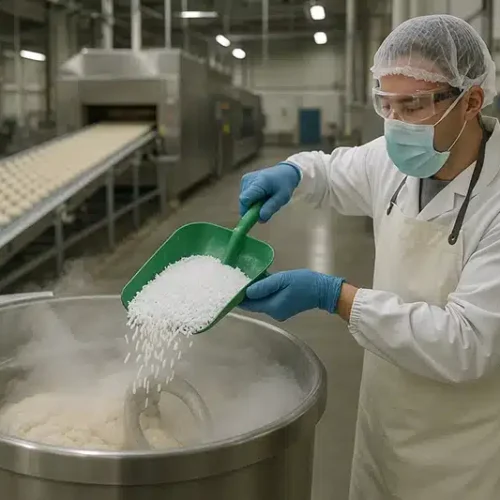
Yeast Cooling With Dry Ice Prevents Fermentation
-
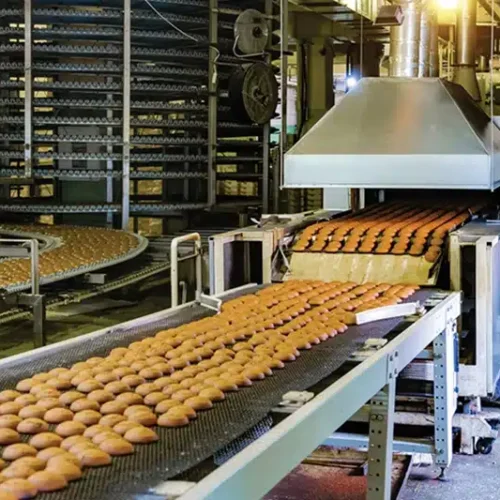
Dry Ice Helps Maintain Batch Consistency
Benefits for Commercial Bakeries
- Inhibit microbial growth
- Prevent fermentation
- Maintain batch consistency
- Environmentally sustainable
- +More
Use Cases for Commercial Bakeries
- Dough Mixers
- Dough Blenders
- +More
Best dry ice production equipment for industrial bakery facilities:
Dry Ice Cooling for Winemaking
Meanwhile, in winemaking within the beverage sector, dry ice is instrumental in protecting the must from oxygen and to support temperature control.
Dry ice during fermentation, dry ice pellets are often added to fermentation vessels to protect the must from oxygen and to support temperature control; 3 mm dry ice pellets are ideal for this application.

-
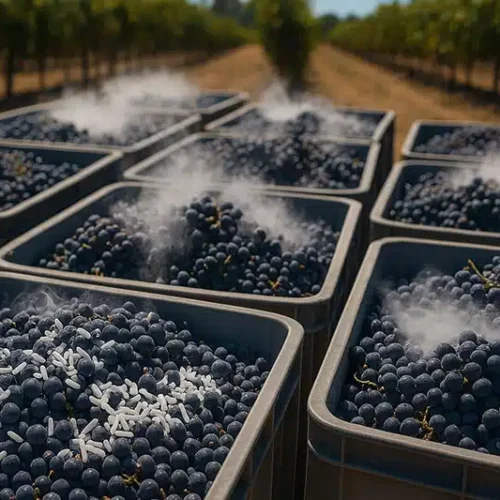
Grape Heat Protection With Dry Ice During Harvest
-

Dry Ice Protects Wine Must From Oxidation
-
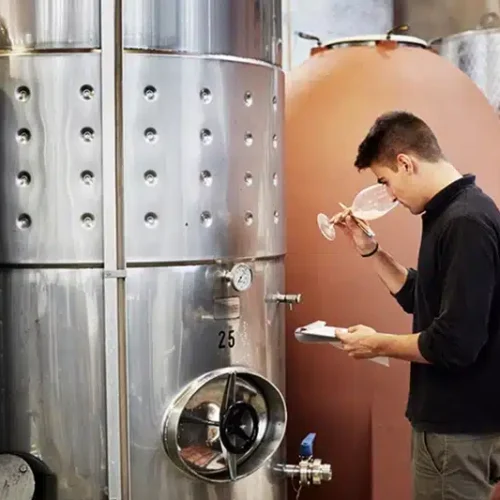
Maintain Wine Batch Consistency With Dry Ice
Benefits for Winemakers
- Protects the grapes from the heat
- Protects the must from oxygen
- Maintains wine batch consistency
Use Cases for Winemakers
- Grape Harvest Chilling
- Fermentation Tanks
- +More
Best dry ice production equipment for winemaking sites:
-
Dry Ice Production Hub
Our compact, modular dry ice unit, housed in a 10 x 10 ft (3 x 3 m) ISO container, gives you in-house dry ice generation anywhere. Position it alongside your liquid CO2 source and watch it efficiently produce dry ice on-demand.
Dry Ice Production Hub -
The PR120H Dry Ice Pelletizer
Produce up to 265 lbs (120kg) per hour
PR120H -
The PE 80 Dry Ice Pelletizer
Produce up to 176 lbs (80 kg) per hour
PE 80
Dry Ice as a Cost-Effective Alternative to CO2 Snow
The CO2 snow horn is a widely used device in the meat industry and other food processing industries as a method to flash freeze product by covering it quickly with a layer of carbon dioxide “snow”.
| Cooling Method | LCO2 Conversion Ratio | Safety | Product Scrap |
|---|---|---|---|
| Dry Ice | Low Conversion Ratio (2.2 to 1) | Minimum CO2 Vapor | High-Density Pellets Extruded |
| CO2 Snow | High Conversion Ratio (4.5 to 1) | Creates Large Amounts of CO2 Vapor | Product Lost Due to High Exhaust Requirements |
CO2 snow horns require approximately 70% more liquid CO2 compared to a Cold Jet pelletizer, in order to produce an equivalent amount of solid CO2 dry ice.
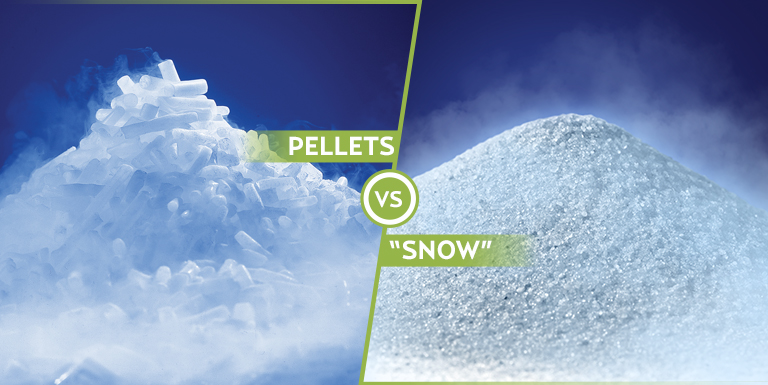
When food safety is on the line, processors trust in Cold Jet.
Download our complete guide to using dry ice for cooling in food processing facilities.
WE ARE HERE TO HELP.
Interested but don’t know where to start?
Contact us today to learn more about our solutions and see how they can meet your unique needs.
